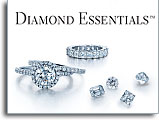Diamonds represent the epitome
of luxury, decadence and absolute excess. Diamonds have long been held in high
esteem by humanity for their, beauty, radiance and unbridled sheen. When
diamonds are bought and sold however, some diamonds are more expensive than
others, and this happens solely because some gems are of a higher grade than
others. These grades include, but are not restricted to the 4Cs (Cut, Color,
Carat and Clarity), and pre-determined tests that are conducted by a 3rd party
laboratory to determine the grade of the stone in question.
The history of Diamond
Certification:
We all know that by the late
1800s, De Beers was the world’s largest diamond miner and supplier. The stones
mined from De Beers’ mines were bought and sold the world over. In the 1890s,
the London Syndicate, a collaborative syndicate of buyers and sellers of
diamonds mined in De Beers’ mines came up with a grading system for the
merchandise they were purchasing.
Now the earliest system (i.e.
the London Syndicate’s grading system) was quite rudimentary and basic, they
based their decisions about a diamond on a loose color grading system. This
meant that they would sort through rough diamonds and assess their grade based
on an inconsistent color allocation system. Some of the earliest ‘certified’
diamonds therefore had vague grading like brown, yellow and almost transparent
ascribed to the stones graded.
It wasn’t until 1931, when
Robert M. Shipley, a former diamond retailer, founded the Gemological Institute
of America, that the diamond industry got its first formal system of evaluating
a diamond. The institute’s journey into being the foremost authority on
gemstones the world over was one that saw it give the world a series of
‘firsts’, the most prominent among them were the 4Cs. Grading a diamond on its
cut, color, clarity and carat weight, revolutionized the way diamonds have been
bought and sold.
How diamonds are graded…
As stated earlier, the diamond
is graded on its cut, clarity, color and carat weight. Now how are each of
these determined is the next question.
Cut: A diamond’s cut isn’t just
the natural shape of the stone or the shape in which it is cut. The term ‘cut’
represents the proportions, polish, and symmetry and facet uniformity. A
diamond’s certificate lists these aspects under a grading system.
Clarity: Clarity of a diamond
is determined through a battery of tests designed to tests the way light passes
through the stone. Clarity tests also look for things like fracture filling,
and would also evaluate if the stone is natural or synthetic (simply because
synthetic stones can be made in a laboratory and are much less expensive as
compared to a natural diamond.)
Color: The color of a diamond
is determined against graded stones of a pre-existing color. Later microscopes
with up to 10X magnification will check the diamond for flaws and blemishes.
Carat Weight: The carat weight
of a diamond is checked on a very precise and sensitive weighing scale. This
scale is specially formulated to make sure that the diamond’s weight is as
precise as possible.
Diamond Certification:
Advantages
Diamonds that are graded always fetch a higher price than their non-graded counterparts. Think of buying a
non-certified diamond as akin to taking a trip without a map, it is
ill-advised. A lay person buying a diamond isn’t always aware of whether the diamond
is natural or synthetic, as to the untrained eye, both would look similar, a
certificate vouches for the authenticity of a diamond and therefore simplifies
the buying decision for the customer.








No comments:
Post a Comment